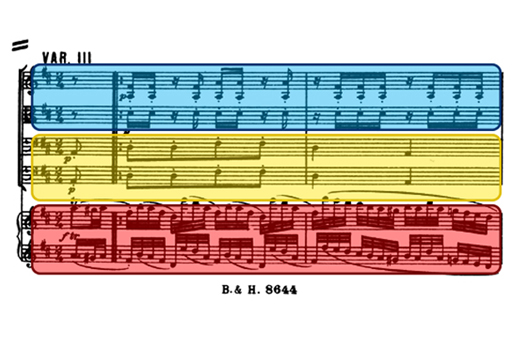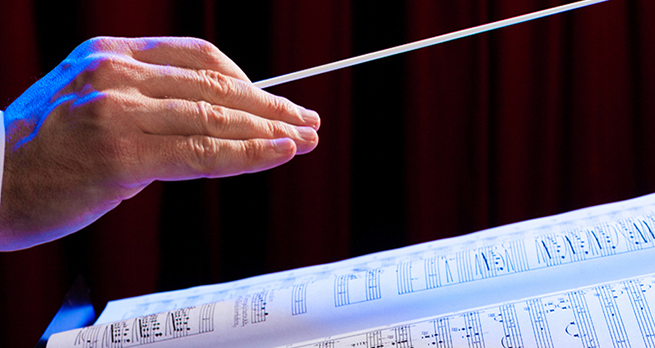3.2.4 Layered textures

You are already familiar with the technique Schubert uses in Variation 2, as it is similar to that used by Mozart in the first two variations of the set you studied last week – one instrument plays the melody clearly, while others play fast passages around it. We will move on to Schubert’s Variation 3.
The first visual impression of the score here is that it is in layers. The piano part looks black with fast notes, the violin and viola parts have lots of gaps with rests and the cello and bass parts look like they are moving at a similar pace. The score has been colour-coded to show you how the parts are grouped.
Picking out layers like this is part of the ‘landmark’ spotting that is so helpful to understanding how scores work and what they tell us. The layer which has the melody will be the easiest to follow, but it’s also important in determining how the performers create and balance the different sounds of the instruments. In this quickly moving variation, the melody is in the slower moving parts, the cello and bass.
In the previous section, you heard the performers discussing how they referred to the score when deciding on elements of balance. Now, listen to it several times and follow each layer of the score in turn using the PDF of the score [Tip: hold Ctrl and click a link to open it in a new tab. (Hide tip)] . Try to listen and look out for patterns and repetitions to help you navigate the structure of the piece. Some sections will be easier to work out than others because they are more repetitive, or because they move more slowly, or because you can hear the instrument concerned more clearly. By the time you’ve done this exercise a couple of times, following the score gets easier and you will find the important landmarks quickly.
